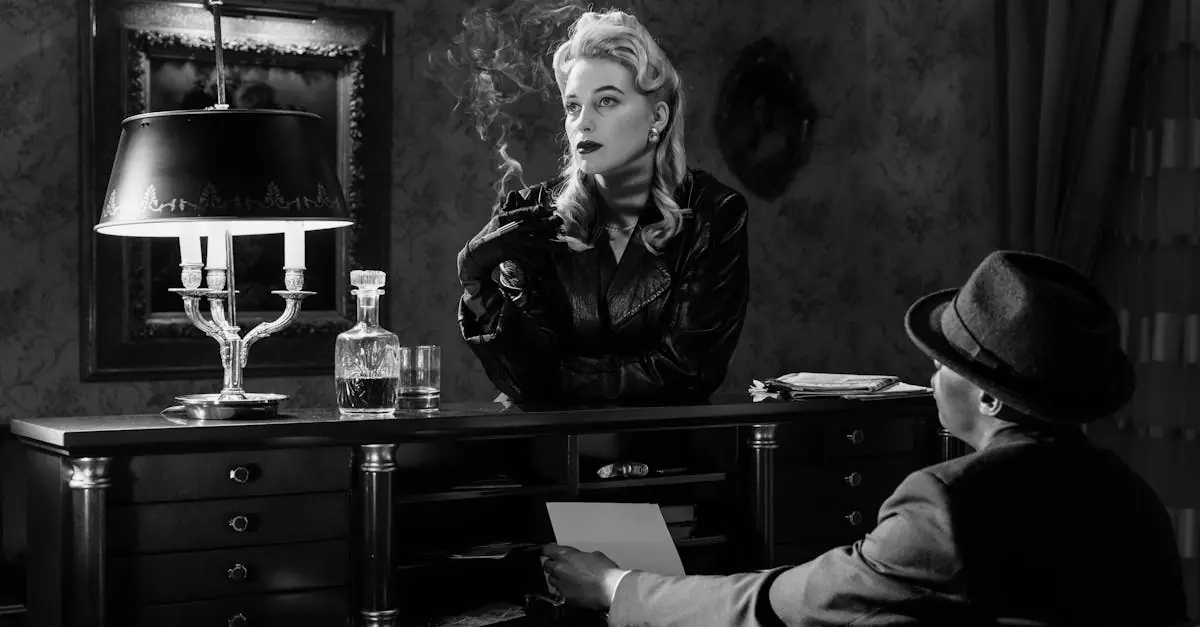Table of Contents
ToggleIn a world where fine dining meets dark humor, The Menu serves up a tantalizing plot that’s as deliciously twisted as a gourmet dish. Picture this: a group of wealthy diners arrives at an exclusive restaurant on a remote island, only to discover that their meal comes with a hefty side of suspense. As the night unfolds, the chef’s culinary creations take a sinister turn, leaving guests questioning their appetites and their lives.
With a blend of satire and thrills, this film explores the absurdities of high-end dining culture and the lengths people will go for a taste of luxury. It’s a feast for the senses that keeps viewers on the edge of their seats, wondering just what’s on the menu next. Whether you’re a foodie or just in for a wild ride, this movie promises to deliver a flavor-packed experience that’s anything but ordinary.
Overview Of The Menu Movie
“The Menu” presents a compelling narrative centered on an exquisite dining experience that quickly descends into chaos. Set on a secluded island, a group of affluent diners encounters a series of unexpected events during their meal. Tension escalates as the evening unfolds, revealing sinister intentions behind the meticulously curated dishes.
Catering to a satirical view of high-end culinary culture, the film critiques the lengths individuals go to for luxury. It showcases not just the artistry in food preparation but also the darker implications tied to elitism within dining experiences. As the plot thickens, characters reveal their motivations and desires, adding depth to an already intense atmosphere.
The unique setting amplifies the suspense. An island far from daily life isolates the diners, heightening their vulnerability. Characters, each with distinct backgrounds and flaws, navigate complex relationships amidst the escalating drama. With every course served, revelations emerge that challenge the perceptions of wealth, privilege, and what it truly means to savor life.
Audiences witness a blend of dark humor and existential thrills. Themes of indulgence and excess resonate strongly, inviting viewers to question societal norms. “The Menu” stands out as an imaginative reflection on gastronomy, transformed into a gripping tale that leaves a lasting impression.
Key Characters
“The Menu” features a compelling cast that adds depth to its intense narrative. Each character plays a crucial role in unraveling the film’s themes and plot.
Chef Slowik
Chef Slowik serves as the enigmatic figure at the center of the restaurant’s chaos. His character combines brilliance with menace, showcasing a passion for culinary perfection. Every dish he presents carries a hidden meaning, reflecting his disdain for the elitism surrounding fine dining. Audiences witness his transformation from a celebrated chef to a vessel of revenge, revealing the dark realities behind his gastronomic artistry.
Margot
Margot stands out as a unique presence among the guests, representing a voice of reason amidst the chaos. Her background contrasts sharply with that of the wealthy diners, adding layers to her character. Throughout the film, she becomes entangled in Chef Slowik’s twisted game, using her instincts to navigate danger. By asserting herself, Margot challenges the status quo of the dining experience and questions the motives of those around her.
Richard And Anne
Richard and Anne embody the archetypes of wealthy privilege in the film. They arrive at the restaurant with expectations of grandeur, viewing the experience as a status symbol. Their superficial understanding of fine dining and entitlement quickly becomes evident. As tensions rise, their characters reveal insecurities and flaws, showcasing the pitfalls of privilege within the high-end culinary world. Their interactions with other diners further emphasize the film’s critique of elitism.
Major Themes
The film “The Menu” explores several major themes that enhance its critique of high-end dining culture and societal dynamics.
Class Struggle
Class struggle permeates the film, illustrating the vast divide between the privileged elite and those who challenge their status. Diners display arrogance, approaching the dining experience with a sense of entitlement. Characters like Richard and Anne signify this entitlement, embodying superficial wealth. Their dismissive attitudes highlight the ignorance surrounding their privileged position. Conversely, Margot’s presence represents a contrasting viewpoint, emphasizing authenticity over extravagance. Through her interactions, the film presents a stark examination of how social class impacts behavior and perceptions in an exclusive setting.
Morality And Ethics
Morality and ethics come to the forefront as diners confront the consequences of their indulgent lifestyles. Chef Slowik orchestrates the meal with a purpose, exposing the ethical dilemmas associated with the culinary world. Each dish symbolizes deeper moral questions, challenging characters to reflect on their choices. The tension escalates when diners must face the repercussions of their actions, leading them to confront their ethical beliefs. Themes of consequence and accountability emerge as the plot unfolds, prompting both characters and viewers to consider the real cost of excess and luxury in their own lives.
Plot Summary
“The Menu” presents a thrilling narrative that explores a gourmet dining experience with dark twists. Set on a remote island, wealthy guests discover that their culinary adventure entangles them in a sinister plot.
Beginning
The film opens with a luxurious boat ride transporting guests to an exclusive restaurant. Chef Slowik, the intriguing mastermind, welcomes them, establishing an air of sophistication. Initial interactions reveal the guests’ privileged attitudes and flaws, particularly in characters like Richard and Anne. Their superficiality contrasts sharply with Margot’s grounded presence, hinting at deeper tensions. This setting quickly builds anticipation for the dining experience ahead, creating a sense of curiosity about the meal’s true nature.
Middle
As courses unfold, the atmosphere shifts, exposing the guests’ hidden insecurities. Each dish reveals a connection to the diners’ pasts, cleverly critiquing their elite lifestyles. Margot’s instincts guide her, leading her to question Chef Slowik’s intentions. Concurrently, Richard and Anne’s entitlement becomes increasingly evident, demonstrating the film’s commentary on wealth and privilege. The chilling realization that the meal serves a darker purpose intensifies the suspense, as diners grapple with their choices and motivations.
Climax And Resolution
The tension escalates during the final course, where the true nature of Chef Slowik’s plan becomes apparent. He confronts his guests about their indulgent lives, forcing them to face the consequences of their actions. Spectacular visuals accompany the climax, illustrating the chaos erupting in the dining room. The resolution unravels as characters confront their fates, showcasing the stark divide between privilege and authenticity. Margot’s journey culminates in a choice that challenges the narrative’s moral underpinnings, leaving a lasting impact on the audience.
Critical Reception
The response to “The Menu” highlights its unique blend of satire and suspense. Viewers often praised the film for its clever critique of elitism in fine dining.
Audience Reactions
Audience reactions varied, with a majority expressing surprise at the film’s twists. Many viewers appreciated the dark humor alongside a gripping narrative. Engagement on social media indicated a strong connection to the themes of class struggle and privilege. Several fans shared memorable quotes, reflecting the film’s impact. Discussions frequently centered on character development and the shocking climax, contributing to its status as a memorable cinematic experience.
Professional Reviews
Professional reviews generated significant attention, showcasing a range of perspectives. Critics commended the film’s originality and the performances of the cast, particularly that of the leads. Many noted the striking cinematography and the meticulous attention to detail in food presentation. Reviews often highlighted the balance between tension and dark humor, emphasizing how it enhanced the thematic depth. A consensus emerged regarding its commentary on societal dynamics, underscoring its relevance and artistry within the genre.
“The Menu” captivates audiences with its sharp satire and suspenseful storytelling. It masterfully critiques the world of high-end dining while exploring deeper themes of class struggle and morality. The film’s unique setting and complex characters create an atmosphere that keeps viewers on the edge of their seats.
As Chef Slowik’s intentions unfold, the narrative challenges perceptions of privilege and authenticity, leaving a lasting impact. The blend of dark humor and thrilling drama ensures that “The Menu” resonates with a diverse audience, prompting reflection on the true cost of indulgence and luxury. This film not only entertains but also sparks important conversations about societal dynamics and the nature of elitism in contemporary culture.




